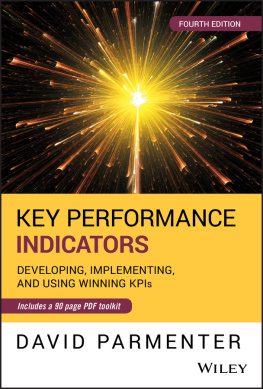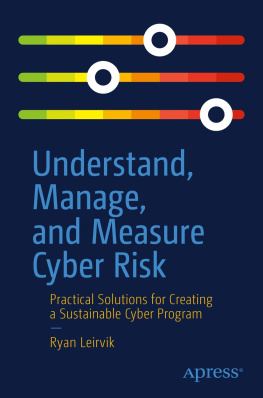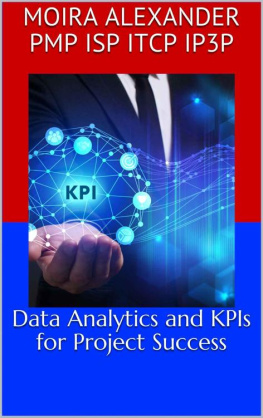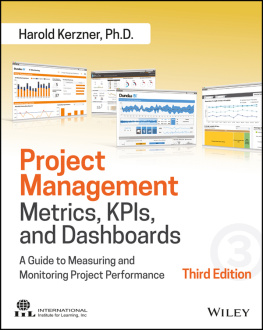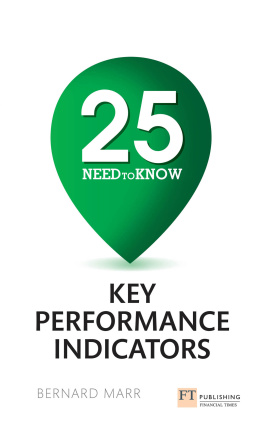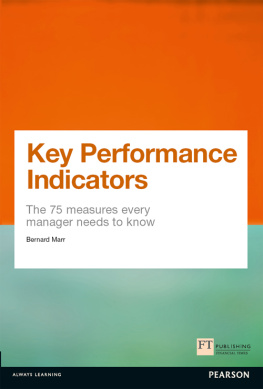
Table of Contents
List of Tables
- Introduction
- Chapter 1
- Chapter 2
- Chapter 4
- Chapter 5
- Chapter 6
- Chapter 7
- Chapter 8
- Chapter 9
- Chapter 10
- Chapter 11
- Chapter 12
List of Illustrations
- Introduction
- Chapter 1
- Chapter 2
- Chapter 3
- Chapter 4
- Chapter 6
- Chapter 7
- Chapter 9
- Chapter 10
- Chapter 12
Guide
Pages
Testimonials from organizations that have used this methodology
UK Food Manufacture with 4,000 FTEs with Factories in 10 Locations
I was specifically concerned with the business's sole focus on short-term outputs, as opposed to medium- and long-term inputs, which I saw as predictors of future performance. I was also concerned at the lack of teamwork and confusing terminology (in-company slang), which created division, confusion, and a bit of a blame culture. Needing some inspiration, I read up on business improvement theory and came across David's work.
We asked a senior manager to lead the change program working with, and mentored by, David. This took the form of a series of sessions where the manager and David, working with a number of key stakeholders, participated in a small number of workshops and project planning meetings, the culmination of which was a full rollout of the KPI methodology across the business.
David, using webinar technology, was able to deliver the training in 2.5-hour sessions to multiple locations simultaneously, with breakout sessions where groups could germinate, share, and develop their ideas. The webinar sessions helped garner buy-in from the executives and helped deliver results quickly. Alongside this steering group, we established a KPI team to do the heavy lifting and to ensure the intent was cemented into daily working patterns. This KPI team remains today, providing the entire business with KPI reporting on a daily basis.
I would recommend this methodology to all CEOs who are seeking to more easily see the granular performance of their business. We've moved from being a backward-looking business, where teams politick and mark their own homework, to a more lithe and forward-looking company with live and objective reporting that guides us to focus on the things that are important and we can control.
Mike Snell, Managing Director, IPL
Having an external and objective guide in the shape of David's work was instrumental in launching our KPI Office. Utilizing an external and objective view allowed us to approach the implementation with much more empathy and ensure a smoother entry into the cadence of the business.
Having an external mentor and sounding board was crucial for a right first-time implementation. This was our first and only venture into launching a KPI venture, something David had done countless times.
We implemented pretty much exactly to David's guide, and I'd suggest that the implementation is agnostic to the nature of the business you are running.
The three hardest things in the project that we overcame were (1) gaining cultural acceptance that we needed to introduce better measurement, (2) turning the business into a receive, not run reporting culture, and (3) identifying a data visualization platform that was easy to implement.
Our KPI team now consists of five analysts who operate a business partner model whereby each analyst partners with a division. Their tasks are threefold: (1) provide the required measures for that column of the org to succeed, (2) provide easy to interpret and visualise insight into their current performance, and (3) collaborate with their business partners on creating actions to improve performance using the aforementioned data and insight.
The main benefit we have seen from the KPI project has been educating the business that measurement is not a bad thing. In fact, the achievement we are most proud about is that we now have a culture where people want to be measured.
Jordan Steane, KPI Team Leader, IPL
Global Consumer Finance Business
I first became aware of David's KPI methodology some years ago in the UK. When we were planning for our recent annual executive offsite, we wanted to engage in a different way with KPIs and David's methodology came to mind. Our executives originate from both large and small financial organizations and we'd all seen different approaches to KPIs in our prior professional lives. What we all really wanted to do this time was try to break from the backward-looking measures of the past and instead identify measures that informed our chosen future.
David brought a refreshing approach to the identification and implementation of relevant and tailored KPIs that you and your teams can engage with.
I would recommend this methodology to all executives who are looking to break free from KPIs that have previously delivered poorer performance outcomes than you and your teams deserve.
Cameron Small, Group CFO
I was brought in to lead and implement this particular project after our global executive had spent nearly two days at an executive offsite getting an overview of David's methodology and ascertaining the corporate CSFs pertinent to our particular business. I was joined by a colleague who was an L&E professional working in our head office Human Resources team. Although we were based in different countries and had never previously met, we managed to build and maintain team camaraderie through daily communication and frequent video calling.
The CSFs were the backbone to the overall project. When we presented them to employees around the world, we found they resonated with all regions and all lines of business. It was certainly easier to build a framework when the starting point was communal, and knowing the executive had invested valuable time in determining the CSFs added tremendously to buy-in.
David was instrumental in training our two-person KPI leadership team. He co-presented with us on the first two workshops (Australia and Korea) where we instructed on the methodology and gathered performance measures from all participants. We took over presenting from that point for the remainder of our global workshops and found the templates provided were particularly helpful. David had done a tremendous job in imparting his knowledge and instilling confidence in us.
David's KPI book (third edition) was our reference manual. We used it as a guide when questions and thoughts came out of the crowd that we struggled to handle the topic was always covered in the book.
Throughout the project I found David's mentoring useful and would recommend that all KPI team leaders access a suitable external mentor.
We followed the process as laid out in the KPI book with the exception that we ultimately determined we could successfully implement fewer KPIs in our organization and still significantly increase monitoring of our performance outside of historical financial metrics.
The three hardest things in the project that we overcame were (1) buy-in from all senior leadership, which was necessary to ensure success, (2) inconsistencies with systems and processes among our operating regions, as our growth was mainly via acquisitions vs organic, and (3) ensuring the project got top attention given all the challenges facing the organization and competing priorities for time.
The KPI team has now grown with multiple KPI Champions in each global operating region/line of business and our main tasks ahead are refining the dashboard and continuing to implement some of our newest performance measures that are an innovative way of managing the organization.
Next page
